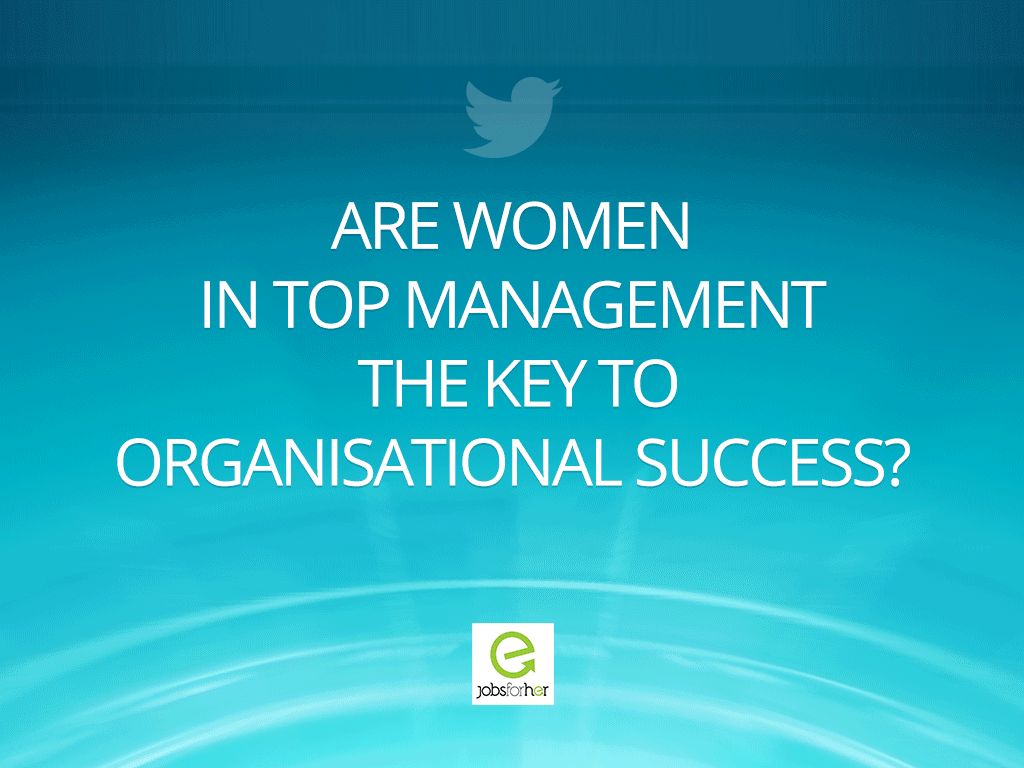Are Women in Top Management the Key to Organisational Success?
- Meethu Abraham
- in
- Back to Work, Career Development, Women-friendly Companies, Working Women
- |
- 08 May 2018

There’s an inevitable change happening across what used to be male domains — more women are stepping up and stepping into inclusive workplaces as part of a forward movement to drive the diversity agenda.
Although gender is a social construct — recruiting, retaining, and advancing women in the workplace is imperative to thrive in the global marketplace. A healthy gender representation across all levels of the organization has shown to encourage the flow of innovative ideas and thoughts, and an improvement in the financial performance of organizations.1
It is arguably the raison d’être of inclusiveness — creating a level playing field where women in top management are included, encouraged, and empowered to manage their careers.
How does gender diversity positively impact an organisation? Can it help a company achieve strong financial results?
Parity in gender representation is well-validated with research from across the world that reveals a direct correlation between the number of women in the boardroom and improved financial performance.2
“Women leaders’ birth unity, not division. They know how to position people and galvanise talent towards the common goal. They celebrate people by empowering everyone,” reinforced Ketan Kapoor, Co-Founder & CEO, Mettl.
In fact, never before has the diversity mandate been the need of the hour, with women in leadership roles, which is the key to closing the gender gap at work. This is indicative that diversity impacts innovation and consistent financial performance3 (Dr. Rohini Srivathsa, AI and Data Science Leader).
Organisations are looking within their structures to create equal opportunities for women to make it to the top. A workforce gap analysis shows that women representation in leadership is an indicator for hiring more women across the board leading to more equity of economic opportunity for women.4
Sareena Singh, Global Head - Controls Assurance for a reputed bank stated that “One in three top executive positions should be filled by women and having a more balanced workforce across all levels is the way for companies to enjoy increased revenue.”
To implement the change and close the gender gap in top management, a McKinsey study established a positive correlation between the level of excellence and financial performance5 in companies where women are strongly represented at top-management level.
What role can women leaders play to enhance the working policies/environment for women in the organisation?
Integrating women and men in equal numbers in the workplace through improved hiring for leadership positions, as well as promoting women into leadership roles could be the start of retaining and developing women leaders and more equity for women across the board. Ketan Kapoor pointed out, “You can’t be what you can’t see,” as studies show that almost two-thirds of women reported a lack of senior or visibly successful female role models as a major obstacle to their career advancement.6
Rajesh M K, Business Head – Commercial & Private Banking Technology strongly believes that the policies and practices at least in some large firms leave much to be desired, as close relatives are retained in board positions to meet the mandate to have at least one woman on the board. 
How can gender balance be achieved at work and home and how can companies play in helping to achieve this?
“We need to raise our sons to imbibe the values of equality, fairness, diversity,” noted Dr. Rohini Srivathsa.
If the “working woman” was more of a norm, women wouldn't quit in such large numbers in the first place. And if men were incentivised to participate more in parenting and housework, women could continue to accelerate their participation in companies. Rajesh M K strongly advocates a cultural shift where women see themselves as ‘primary drivers’ of national productivity and being the ‘partner’ in both earning and support. As well, by relying on emotional intelligence, open-style negotiations skills, and highly skilled experience, women can solve problems and overcome challenges to widen their scope of responsibility in their roles at home, and in global organisations.
Ketan Kapoor upholds the view that companies need to rethink how to manage, hire, and promote, and also rethink unconscious biases by implementing policies that enable professional and personal development for women.
As companies undertake efforts to make teams more diverse, an analysis7 to understand the relationship between diversity in management and innovation shows that there is a significant impact on revenue with women in teams fostering a culture of collaboration and innovation.
What can companies do to prevent women from dropping out in the first place and pave the way for more women to follow in leadership?
The first step toward overcoming any challenge is awareness.8 Companies have to “adopt a holistic ecosystem of enabling a support system for flexibility, mentoring/coaching during critical phases perhaps and more role models to share their stories,” said Mandira Majumdar, Director, Function Head (Credit Risk, PBB & Underwriting, Digitisation).
So what can women leaders do to pave the way for more women to follow in their footsteps given that they are strong advocates of loyalty, commitment and a mix of skills that is crucial in diverse workplaces?9 Having more women in leadership builds a stronger pipeline for experienced and talented women to re-enter the workforce in an environment promoting inclusivity, creativity and diversity. Organisations should factor in marriage, mobility and maternity to evolve performance models in workplaces while enabling a support system with flexibility and family leaves to offset the impact of having children that account for the critical 10-year wage gap in women.10
To that end, organisations will have to implement gender agnostic policies, practices, and programs for favorable work environments that integrate flexibility, agility, and diversity for the workplace of the future.
If more workplaces think about diversity holistically to support uberisation of women employees, this can improve overall efficiencies and bottom lines.11
Even though we have come far, it’s when organisations move beyond the perspective of “how” to “what now?” that will create the basis for proactive change.
Is your company an equal opportunity employer committed to accelerating female participation in the Indian workplace?
Hire experienced and skilled women returnees available at no notice period through the JobsForHer Employer Zone today! Sign up here or write to simran@jobsforher.com to learn how your company can gain from this fantastic talent pool!
Sources:
[1] The Future is Here, Published by Confederation of Indian Industry (CII), EY, 2018
[2] The Future is Here, Published by Confederation of Indian Industry (CII), EY, 2018
[3] The Mix That Matters, Innovation Through Diversity, BCG, April 2017
[4] Women Leaders Key to Workplace Equality, Sue Duke, LinkedIn, November 2017
[5] Women Matter, McKinsey & Company, 2007
[6] Women in Leadership: A European Business Imperative, Catalyst
[7] The Mix That Matters, Innovation Through Diversity, BCG, April 2017
[8] How to Promote Women in Leadership, Susan M. HeathField, July 24, 2017
[9] 6 Reasons to Fix The Mix, Neha Bagaria, JobsForHer, August 2015
[10] The 10 Year Baby Window That is the Key to the Women’s Pay Gap, Claire Caine Miller, The New York Times, April 9, 2018
[11] The Latest Trend in Hiring: Uberisation of Women Returnees, Neha Bagaria, JobsForHer, November 2017




